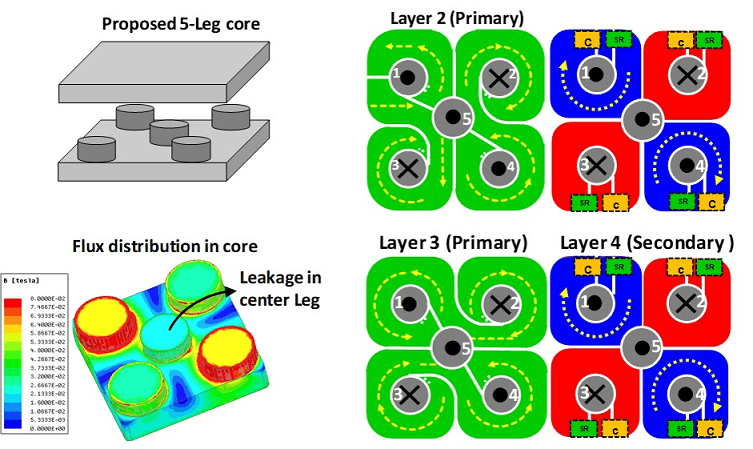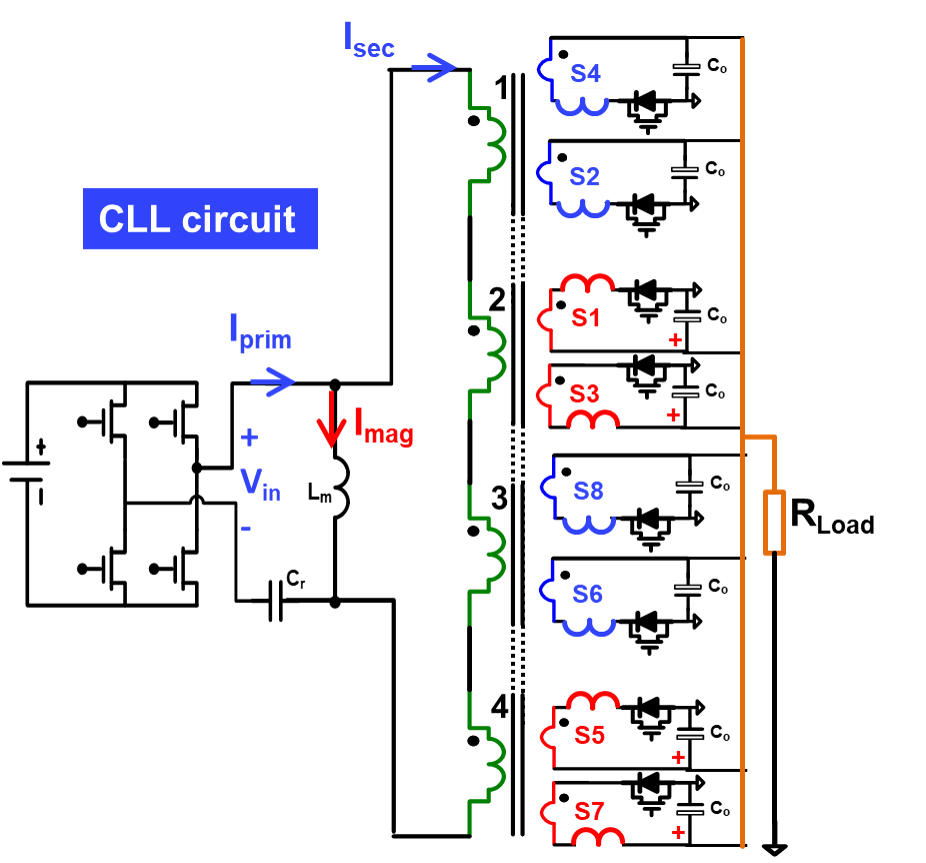LIBRARY
Magnetic Integration of Matrix Transformer with High Controllable Leakage Inductance

This paper proposes a novel approach to integrate high controllable leakage inductance with a matrix of four transformers us- ing one magnetic core. The paper proposes a five-leg magnetic core where four legs are utilized for four transformers and a fifth leg (center leg) is placed at the center between the four transformer legs to create controllable leakage inductance without sacrificing the power density of the magnetic structure, as shown in Fig. 1. The secondary windings of the original matrix transformers are relocated to create leakage flux in the center leg. Different winding arrangements can also be used to create different leakage inductances on the second- ary or primary sides. The leakage inductance can be controlled by controlling the cross-section area and air gap of the center leg. In the example in Fig. 2, the secondary winding is relocated without making any change on the primary winding. The blue secondary is active for first half cycle, and red secondary is active for the second half cycle. This will cause leakage flux to pass through the center leg. By relocating the secondary winding, the physical leakage inductance is found on the secondary side. This way, the example winding structure can be used in a three-element CLL resonant circuit, as shown in Fig. 2. Different combinations of winding arrangements will result in different leakage inductance values in both primary and secondary sides.
In summary, the paper proposes a novel magnetic structure with 5-leg core. The magnetic structure integrates a matrix of four transformers with high controllable leakage inductance in a condensed footprint. The integrated magnetics can be applied to a 400 V/48 V 3 kW CLL resonant converter to implement a high-efficiency and high power density dc-dc converter for a datacenter power supply.























































































